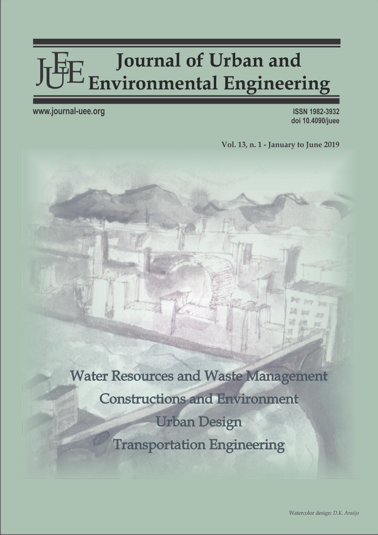CERAMIC WASTE REUSABILITY: EFFECT OF AGGREGATE GRAIN SIZE AND MIX RATIO ON LIGHTWEIGHT DENSE MASONRY UNIT PRODUCTION
DOI:
https://doi.org/10.4090/juee.2019.v13n1.3-12Abstract
Ceramic ware waste generation is becoming a global concern because of the increasing volume, hazardous nature, limited reusability, and poor waste management practices. This study examined the feasibility and efficacy of the inclusion of this waste as complementary aggregate in solid masonry unit production with bias interest on the compressive strength and water absorbability. Three particle sizes (1.4, 1.7, and 2.0 mm) of crushed ceramic ware waste were blended with natural fine aggregate under three different mix ratios (10, 20, and 30%) to produce the masonry units cured for 7, 14, 21, and 28 days prior to compressive tests analysis. Afterwards, some of the categories cured for 28-days were subjected to water absorption test. Morphology and elemental composition of the aggregates were also inspected using SEM-EDM machine. Also investigated were some of the aggregates’ physical properties. Results indicated that most of the waste-modified solid masonry units not only had water absorption capacity within required standard. The values were equally lower than the unmodified dense block (control) by 27 - 50%. Of the eighteen different categories produced, all M20T14, M20T21, and M30T28 modified dense masonry unit series with P1.7 (1.7 mm) and P2.0 (2.0 mm) particle sizes had high crushing force, compressive strength, and modulus range, which were 57 - 70 kN, 57 - 61 kN, 59 - 76 kN; 5.1 - 5.2 MPa, 5.1 - 5.5 MPa, 5.3 – 6.8 MPa; and 400 – 441 MPa, 411 – 419 MPa, 468 – 480 MPa respectively. Hence, modified masonry units with particle sizes P1.7 and P2.0 under the M20T14, M20T21, and M30T28 series are suitable masonry units for non-loading construction purposes. Interestingly, modified masonry unit (M30P2.0T7) cured under 7 days could also fit into this category. Hence, utilization of ceramic ware waste as co-aggregate in dense masonry units with M20 and M30 series production were established in this study for non-loading construction purposesDownloads
Download data is not yet available.
Downloads
Published
2019-10-05
Issue
Section
Articles




